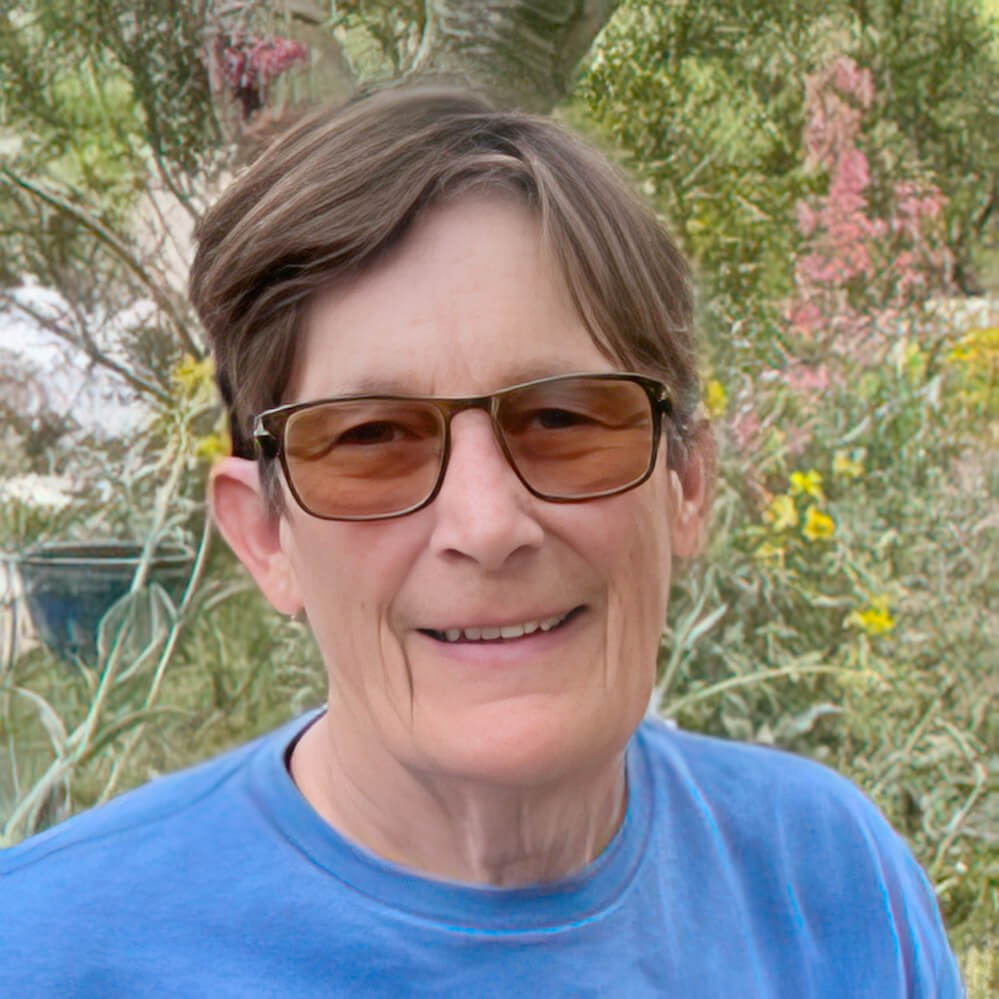How I got interested in photography
I was immersed in the arts from an early age. My father was an amateur photographer and my mother a painter and pianist. At 8, I got my first Brownie camera and began shooting everything I saw. Watching an image magically emerge from the developing tray in my dad's darkroom; spending afternoons lying under the baby grand piano with waves of sound resonating around and through me; texture, pattern, fluidity, and change - these were my earliest influences, and they continue to unfold in my work.
Where I live and my work can be seen
I am fortunate to call the Southwest - a place of incredible natural beauty - my home. I have lived in Tucson, AZ since 1975 when I moved here to pursue a master’s degree in Counseling at the University of Arizona. When I retired from a long career in mental health, I turned my attention full time to photography, ultimately finding my niche in photographing natural subjects. More recently I have begun to create photomontages incorporating these natural objects into both abstract images and scenes of imaginary realism.
My work hangs in galleries, hospitals, and private and corporate collections throughout the US. It has been featured at the Griffin Museum of Photography, Boston; Waxlander Gallery, Santa Fe; PhotoPlace Gallery, Vermont; A Smith Gallery, Texas; Fotonostrum, Barcelona; and Afterimage Gallery in Dallas. Selected images have representation through Cynthia Byrnes Contemporary Art in New York.
What captures my imagination and what I explore in my art
I am interested in edges and intersections of transformation where one thing moves inexorably to become something else. When is the moment when love fades into anger and resentment; when disillusionment erupts into a violent uprising, when order descends into chaos? And when is the moment when war turns towards peace; unbearable grief shifts towards acceptance; or when pain gives way to relief?
I feel the daily bombardment of stories about conflict and anger towards “otherness.” I’m disturbed by the disintegration of public discourse that has devolved into shouting tropes at one another and refusing to entertain differing points of view while using violence to subjugate and silence others. The cacophony of misinformation drives me into further retreat. I’ve always felt a kinship with Buddhist thought and the concept of nonduality - the belief that there is only one reality that is the summation of all experience. That there is no separation between subject and object; inner self and outer experience; self and other. We are drops in the ocean, interconnected manifestations of spirit. When I am engaged in the act of creation – no longer focused on trying to create, but simply being a conduit – time disappears. I’m following an intuitive process to listen for what comes next. The external chatter recedes, I feel a sense of calm, I feel connected to a deeper flow. Touching into these moments provides a respite and allows me to re-engage in the world with all its seemingly unresolvable conundrums. I make art as much for myself as for others; creating visual meditations is an end in and of itself.
